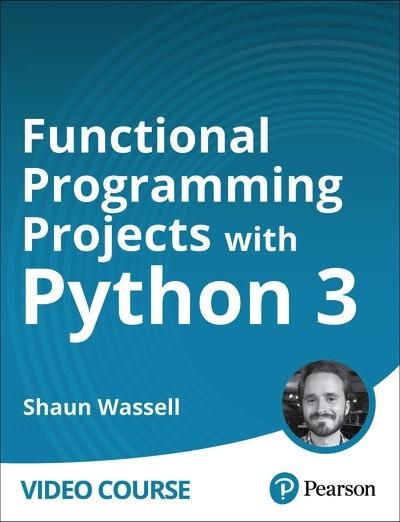English | MP4 | AVC 1280×720 | AAC 44KHz 2ch | 4h 33m | 1.22 GB
In learning and following the core concepts of Functional Programming, you can quickly write more maintainable, flexible, and beautiful code.
Functional Programming is a revolutionary way of writing code that’s rapidly gaining traction in the world of software development. While Object-Oriented Programming is still the most popular programming paradigm, there are a number of problems that come about when using it—hard-to-find bugs, tightly coupled code, and it’s difficult to scale. Functional programming allows us to solve or avoid these problems by taking a different approach to writing software.
In this course, you will learn about the core concepts of Functional Programming and how to apply them in Python, through a mix of screen casting, slides, and coding. It also covers basic functional concepts that lead to first class functions, which leads to working with arrays and objects and then advanced functional concepts.
What You Will Learn
- The core concepts of Functional Programming and how to apply them in Python
- First-class functions and what we can do with them
- Python’s built-in list functions and how they help us work with data, including List Comprehensions
- Advanced functional concepts such as currying, recursion, and composition
Table of Contents
Introduction
Functional Programming Projects with Python 3 Introduction
Essential Concepts and Syntax
Imperative vs. Declarative Programming
Immutability
Pure Functions
Simple Data Structures
First-Class and Higher-Order Functions
What are First-Class and Higher-Order Functions
Example 1 Sale Price Calculator
Example 2 Printing Function Execution
Example 3 Benchmarking Function Performance
Example 4 Isomorphic Functions for Values and Iterables
Example 5 Function-Call Tracking
Example 6 Argument Checking
Function Memoization
What is Memoization
Memoization Technniques Multiple Arguments
Memoization Techniques Higher-Order Functions
Partial Application and Currying
What are Partial Application and Currying
Dictionary Defaults with Partial Application
URL Building with Partial Application
Automatic Partial Application
Working with Lists and Dictionaries Functionally
The Map, Filter, Any, and All Functions
List Comprehensions
The Unpacking Operator
Summary
Functional Programming Projects with Python 3 Summary
Resolve the captcha to access the links!
